$\require{cancel}$
Some Other Components
- We are going to look at some of the things that are standard components.
- I will get just a little out of order and present some sequential logic as well. (I want a register).
- In the end, we will build the shell of a Simple CPU.
-
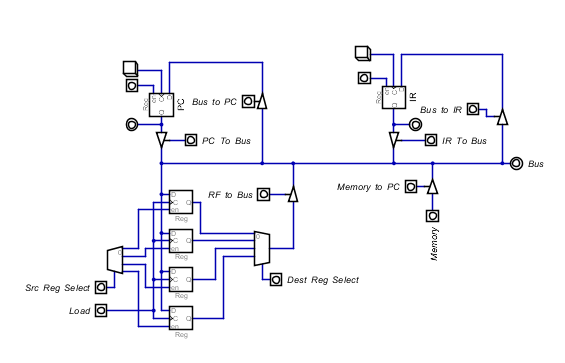
- This uses for three modules
- A register
- A Multiplexor/Demultiplexor
- An Encoder/Decoder
- The register
- This is way out of order so we will only use the unit here.
- We will build one later.
- This is a unit of memory.
- Probably word size.
- It has two data lines
- The line marked D is an input data line.
- The line marked Q is an output data line.
- Q constantly (sort of) supplies the data stored in the register.
- There are delays when the register is changing when the data might not be correct.
- There are at two control lines in this register.
- The
en line makes the register active, ie respond to change.
- The
C line represents the clock.
- By default, the register has some value.
- To change the value
- Put data on the D line (and have it stabilize)
- Raise enable from low to high.
- Raise the clock from low to high.
- Hold enable and D for the required time.
- Lower enable.
- This is called an edge triggered device.
-

- De/Encoders
- A decoder
- n selector bits as input.
- $2^n$ output bits.
- The value of the input is reflected in the output.
-
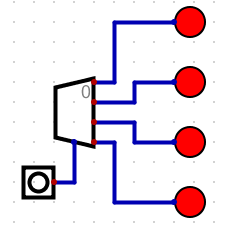
- This is relatively easy to build.
-
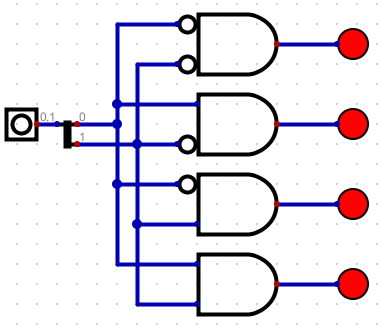
- An encoder
- Has n output bits
- $2^n$ input bits.
- But only one of these lines can be lit at a time.
- The output represents the input line that was lit.
- The circuit "encodes" the address of the line that is lit.
-
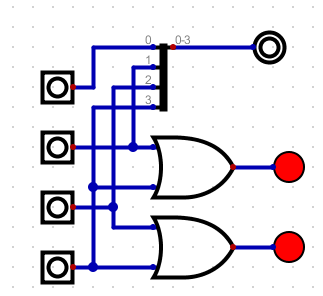
- Multiplexor (mux) and demultiplexor
- A mux takes
- $2^n$ input data lines
- $1$ output data line.
- 1 control line with $n$ bits.
- Based on the value of the control line, the data from the selected input line is transferred to the output line.
-
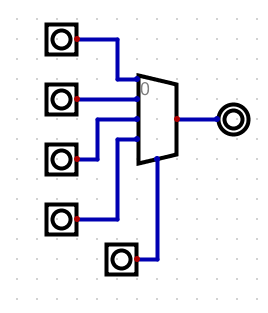
- And is not that hard to build
-
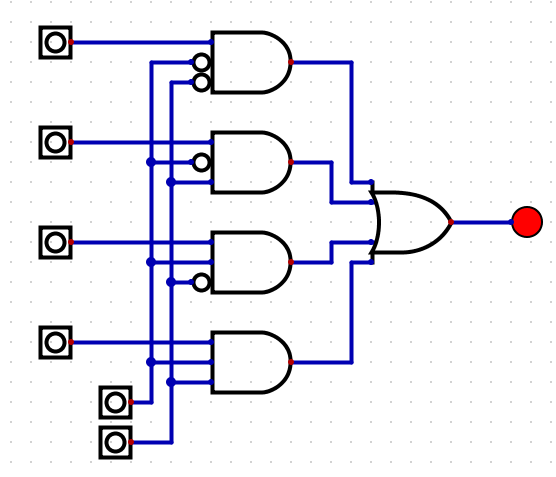
- Figure B.3.6 on page 709 shows the implementation of a multi-channel MUX.
- A demultiplexor does the opposite.
- One data input line.
- $2^n$ data output lines.
- $n$ bit control line.
- Sends the output to the data line selected by the control line.
-
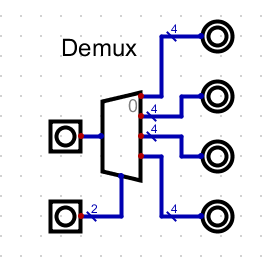
- All of these circuits are available in parts.dig







